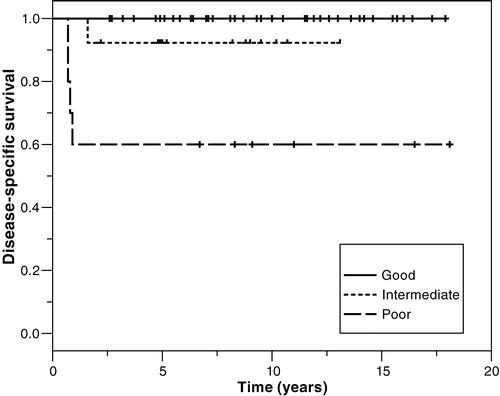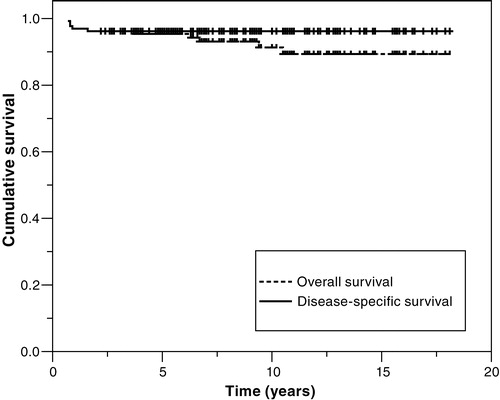Figures & data
Table I. Patient characteristics of 132 patients treated for NSGCT.
Table II. Treatment and relapse among 70 patients with stage I non-seminomatous germ cell tumours.
Table III. Distribution of 62 patients with metastatic germ cell cancers (stages IMk+ to IV) according to the International Germ Cell Consensus Classification Citation[12].
Figure 2. Disease-specific survival of patients with NSGCT according to clinical stage (RMH staging system). Stage I, N = 70; stage IMk + /II, N = 44; stage III, N = 5; stage IV, N = 13 (p < 0.0001). Graphs for stage I and stage III are superimposed.

Figure 3. Disease-specific survival of patients with metastatic (Stage I Mk+ to stage IV) NSGCT according to the International Germ Cell Consensus Classification (IGCCC). Good prognosis, N = 39; intermediate prognosis, N = 13; poor prognosis, N = 10 (p = 0.0001).

